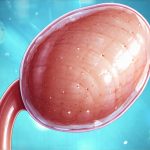Urinary symptoms – frequent urination, urgency, burning sensations, even incontinence – are often associated with infections or underlying medical conditions. However, many people are surprised to learn that what they eat can significantly impact their bladder health and contribute to these frustrating issues. It’s not always about a dramatic allergy; sometimes, seemingly innocuous foods can trigger reactions in sensitive individuals, leading to a cascade of urinary discomfort. Understanding the potential link between diet and bladder function is crucial for taking control of your well-being and finding relief from persistent symptoms.
The connection isn’t always straightforward, which makes identifying food triggers challenging. It’s rarely as simple as “I ate X and immediately felt Y.” Often, it’s a cumulative effect—a combination of foods over time that puts stress on the bladder or irritates the urinary tract. Furthermore, individual sensitivities vary greatly; what bothers one person may have no impact on another. This article will explore common food culprits, explain why these foods can cause problems, and offer strategies for identifying your own personal triggers, empowering you to make informed dietary choices that support a healthier bladder.
Common Food Triggers & Why They Affect the Bladder
Several food groups are known to be potential bladder irritants for many people. These aren’t necessarily “bad” foods; they’re simply more likely to cause issues in those with sensitive bladders or underlying conditions like Interstitial Cystitis (IC). The mechanisms behind these effects vary, but often involve chemical compounds within the food that can directly irritate the bladder lining, increase inflammation, or affect nerve function.
Acidic foods are frequently cited as triggers. Think citrus fruits and juices (oranges, lemons, grapefruit), tomatoes and tomato-based products (sauce, ketchup), vinegar, and even carbonated beverages. While acidity itself isn’t always the problem – our bodies naturally handle acidic substances – high levels of acidity can exacerbate bladder sensitivity and cause discomfort. Artificial sweeteners are another common culprit. Many people find that artificial sweeteners like aspartame, saccharin, and sucralose worsen their urinary symptoms, possibly due to how they impact nerve signals or create inflammation in some individuals. Caffeine is a well-known diuretic (meaning it increases urine production) but beyond this, caffeine can directly stimulate the bladder, leading to urgency and frequency. Finally, spicy foods containing capsaicin can irritate the bladder lining, causing burning sensations during urination.
It’s important to remember that these are generalizations. Not everyone will react to these foods, and the degree of reaction can differ greatly. Some individuals might tolerate small amounts of citrus but struggle with larger portions. Others may find caffeine triggers symptoms consistently, while others experience no issues at all. The key is self-awareness and careful observation. If you feel UTI symptoms but your test is negative, it’s important to explore dietary factors.
Identifying Your Personal Triggers: An Elimination Diet Approach
Because individual sensitivities vary so widely, the most effective way to pinpoint your food triggers is through a structured elimination diet. This involves temporarily removing suspected foods from your diet and then reintroducing them one at a time to observe any resulting symptoms. It requires discipline but can yield valuable insights into your body’s response to different foods.
The process typically unfolds in several steps: First, eliminate the most common bladder irritants listed above—citrus fruits, tomatoes, artificial sweeteners, caffeine, alcohol, spicy foods, and carbonated beverages—for a period of 2-4 weeks. During this elimination phase, carefully monitor your urinary symptoms, keeping a detailed food diary to track everything you consume and any corresponding changes in your bladder function. Once the initial elimination phase is complete, begin reintroducing foods one at a time, every 3-4 days. This allows enough time to assess whether a particular food causes symptoms. For example, on Monday, introduce a small amount of orange juice; observe for any changes in urgency, frequency, or pain throughout the week. If no symptoms arise, you can likely add oranges back into your regular diet. However, if you experience increased urinary discomfort, remove oranges from your diet and proceed to the next food item.
Remember: Consistency is vital. Don’t skip days of observation, and be as precise as possible in tracking both your dietary intake and any associated symptoms. This process can feel overwhelming, but it’s a powerful tool for understanding your body and regaining control over your bladder health. Consider consulting with a registered dietitian or healthcare professional to guide you through the elimination diet process and ensure you’re maintaining adequate nutrition during this time. Using food tools to track triggers in your daily diet can be incredibly helpful.
Understanding Interstitial Cystitis & Dietary Connections
Interstitial Cystitis (IC), also known as Painful Bladder Syndrome, is a chronic condition characterized by frequent and urgent urination, pelvic pain, and discomfort. While the exact cause of IC remains unknown, it’s believed to involve inflammation and nerve dysfunction in the bladder lining. Diet plays a significant role in managing IC symptoms because certain foods can exacerbate these issues.
For individuals with IC, the list of potential triggers extends beyond the common irritants mentioned earlier. Foods high in histamine (fermented foods, aged cheeses, smoked meats) and oxalates (spinach, rhubarb, chocolate) have also been linked to symptom flare-ups. Histamine can contribute to inflammation, while oxalates may irritate the bladder lining directly. Identifying these triggers through an elimination diet is even more crucial for IC sufferers, as dietary modifications are often a cornerstone of their management plan.
The Role of Hydration & Other Dietary Considerations
While identifying and eliminating trigger foods is important, adequate hydration remains paramount for bladder health. Dehydration concentrates urine, making it more irritating to the bladder lining. Aim for 6-8 glasses of water per day, but adjust based on your activity level and climate. It’s also beneficial to avoid drinking large amounts of fluid at once, as this can overwhelm the bladder. Instead, spread your fluid intake throughout the day.
Beyond hydration, consider incorporating anti-inflammatory foods into your diet. Foods rich in omega-3 fatty acids (salmon, flaxseeds, walnuts) and antioxidants (berries, leafy greens, turmeric) may help reduce inflammation and support overall bladder health. Furthermore, maintaining a healthy gut microbiome is increasingly recognized as important for urinary health, as the gut-bladder axis influences immune function and inflammation levels. Incorporating probiotic-rich foods (yogurt, kefir, sauerkraut) or taking a probiotic supplement may be beneficial, but always consult with your healthcare provider before starting any new supplements.
Keeping a Symptom & Food Diary: A Practical Guide
A detailed food and symptom diary is the most powerful tool for uncovering dietary triggers. It’s not enough to simply remember what you ate; consistent, meticulous recording is essential. Here’s how to create an effective diary:
- Record everything: Include all foods and beverages consumed, as well as portion sizes. Don’t forget hidden sources of potential irritants like additives in processed foods or spices used in cooking.
- Track urinary symptoms: Note frequency, urgency, pain levels (on a scale of 1-10), burning sensations during urination, and any associated pelvic discomfort. Be specific! “Frequent urination” isn’t as helpful as “urinated 8 times between 8 AM and noon.”
- Time stamps are crucial: Record when you ate the food and when symptoms appeared. This will help identify potential correlations.
- Be consistent: Make diary-keeping a daily habit, even on weekends or when traveling.
- Review regularly: After a week or two, review your diary to look for patterns and potential connections between foods and symptoms.
This process can be time-consuming, but the insights you gain will empower you to make informed dietary choices and take control of your bladder health. Remember that this is about understanding your body—not restricting yourself unnecessarily. Tracking food impact on daily urinary volume can provide valuable data.
Disclaimer: This article provides general information only and should not be considered medical advice. Always consult with a qualified healthcare professional for any health concerns or before making any decisions related to your health or treatment.





















